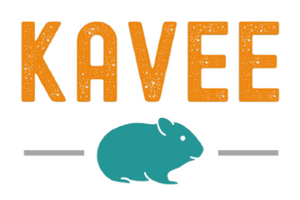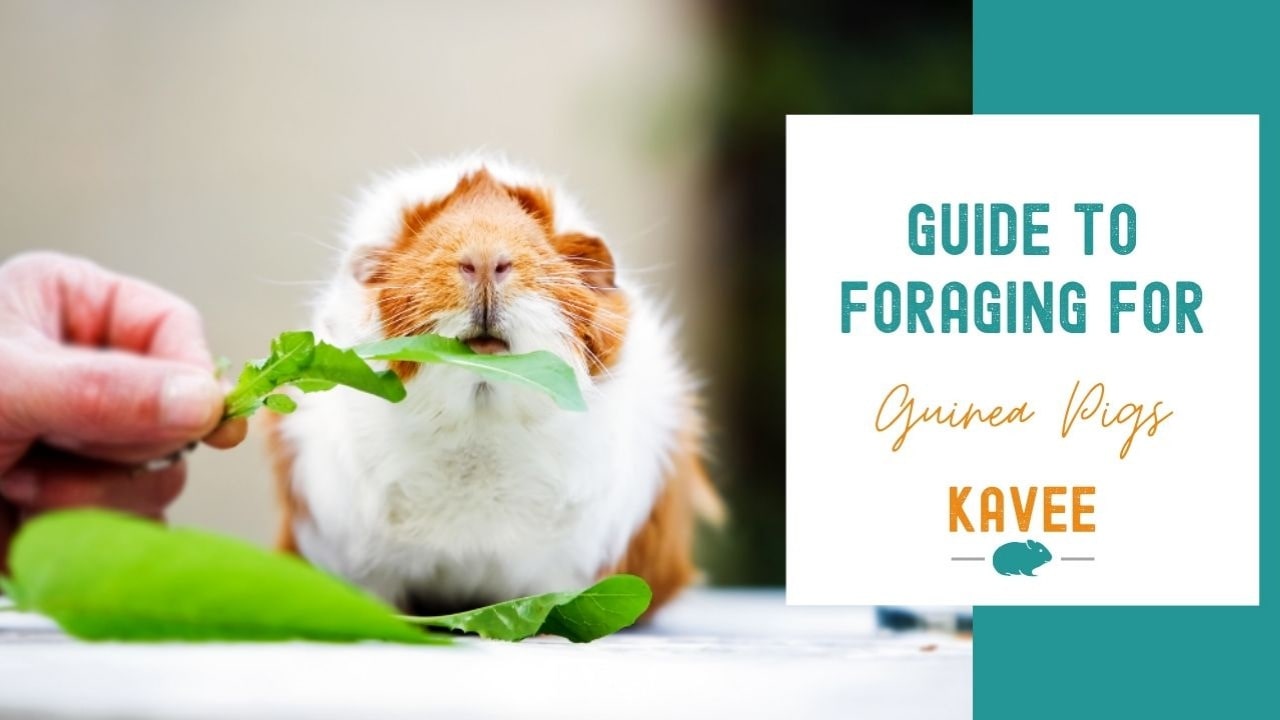One of the best things to do when the good weather returns is to go foraging for your guinea pigs and rabbits. That’s when plants are starting to “spring” into action, and our little companions absolutely love these wild snacks. However, not everything on the ground can be safely handed out to our furry friends, so make sure you double-check everything you forage before feeding it to them.
Whether you’re a foraging expert or a newbie, check out our tips and tricks in this ultimate guide to foraging wild plants for guinea pigs.
What is foraging?
Foraging is the action of searching for wild plants and natural resources for the use of food. Foraging in the wild is a great way for animals to keep physically fit and to ensure survival. For humans, it’s a fun way to get to know the environment better, find tasty plants for pets, and spend time in nature.
Why You Should Forage For Your Guinea Pigs and Rabbits
You may be wondering, why forage when you can take a trip to the local shop and get all you need from there?! Foraging can be a very fun and rewarding experience, packed with plenty of benefits, not only for your guinea pigs but for yourself as well.
The main benefits of foraging are the following:
-
Healthy, Organic, and Varied Meals – Foraged plants are packed with higher amounts of vitamins and nutrients, while being free of pesticides. Providing fresh veggies and plants daily is crucial as guinea pigs are unable to synthesise their own vitamin C. Foraged plants, therefore, support digestive health and promote a happy piggy.
-
Free Food – Foraging is completely free and is a cost-effective way to supplement your piggy’s diet. So you can provide a nutritious diet while also saving money!
-
Improving Pet's Wellbeing - Sprinkling some fresh forage throughout your guinea pigs’ cage encourages their natural foraging behaviour, keeping them entertained while also adding variety to their diet.
-
Exercise and Family Fun – When the weather outside is good, take your guinea pigs out to enjoy the fresh air, forage, and spend time together. Create fun games for them, like hiding their forage around the outdoor run!
When is the best time to forage for guinea pigs?
The great thing about foraging is that you can do it all year round! There is no set time to get out there and search for piggy food, although you’re likely to have more luck over the warmer seasons. Just make sure you learn at what times of the year your piggy’s favourite plants spring into action.
Note on safety: learn all there is to know about the looks and feel of the plant you want to feed to your guinea pig. Never pick and feed a plant to your piggy if you’re not sure it’s the one you know is safe to hand out!
Where can I forage for guinea pigs?
Here are a few tips to guide you when choosing a location to pick some tasty greens for your piggies:
Places to forage for guinea pig safe plants
-
Public footpaths
-
Public parks
-
Hedgerows
-
Woodlands
-
Meadows
-
Gardens
Places to avoid when foraging for guinea pigs
-
Areas with dog fouling – avoid any areas where you visibly see fouling or areas near the sides of the roads where dogs are likely to have urinated, to avoid contamination.
-
Areas treated by pesticides or herbicides – do not forage in areas that have been treated with chemicals, as feeding those affected plants can be very harmful to your guinea pigs.
-
Busy roadways – try to avoid busy areas that are frequented by traffic for the safest foraging experience.
-
Private property – avoid private allotments, front gardens, or fields that are not available to the public. If you do come across an area you’d like to forage in, always ensure you ask permission from the landowners first!

What You Will Need to Forage:
-
Tote bag or basket (avoid plastic bags).
-
Gloves, to protect you against plants that may be thorny or prickly.
-
Clippers or scissors, to remove the trickiest of forage and minimise damage to the plants.
-
Guidebook or phone, to identify safe plants.
The 3 Golden Rules of Foraging
Rule #1: Never pick a plant you’re not 100% sure of its safety
The trickiest part of foraging is identifying the plants. Some plants will often look very similar to one another, so making mistakes can be quite easy. Picking the wrong plant can lead to poisoning for your pets, and while older piggies are better at judging what is good or not to eat, young piggies are likely to nibble at everything they find available. That being said, there are plenty of common and easy-to-identify plants, so don't despair!
To make your plant identification easier, bring along a foraging guidebook, use a foraging app on your phone, or refer to the pictures in this article.
Rule #2: Only pick the best quality!
When you forage, visually inspect the plants for any contamination. Avoid plants that have fungus, mildew rust, mold, bug activity, or that are visibly older (meaning that they’re at the stage of releasing seeds). Plants that reach this stage of reproduction will often be more bitter to guinea pigs. Forage higher up the plant in order to select leaves or parts of the plant that are typically in the best condition.
Rule #3: Take only what you need to respect nature and to prevent damage to the plant!
Be reasonable and only pick what you need. Avoid harvesting entire plants and pick just a few leaves.
What can I forage for guinea pigs?
Here are 20 plants that you can safely forage and feed to your guinea pigs and rabbits:


And here's the list in a table format:
| Grass |
|
|
|
| Dandelion |
|
|
|
| Chickweed |
|
|
|
| Plantain (Narrow and Broad Leaf) |
|
|
|
| Cleavers (Goose Grass) |
|
|
|
List of Unsafe Wild Plants for Guinea Pigs and Rabbits
While there are plenty of safe plants to forage for your guinea pigs, there are also plenty of unsafe plants out there. This list is not exhaustive, so don’t assume a plant is safe if it’s not listed below. As a rule of thumb, evergreens and anything growing from bulbs tend to be inedible for guinea pigs and rabbits. Also, note that grass cuttings should not be fed to guinea pigs and rabbits as they’re a blend of various plants. They can also lead to a build-up of gastric gases.
Here are 20 unsafe plants for guinea pigs and rabbits:
|
|
|
|
|
|
|
|
|
Iris |
|
|
|
|
|
|
|
|
|
|
|
|
|
Oak |
|
How often can guinea pigs have forage?
Guinea pigs can enjoy fresh foraged plants daily, as long as it’s in moderate amounts and they’ve been washed thoroughly. Make sure you feed the foraged plants on the same day, or dry them out and store them to feed at other times. And turn this into a fun, enriching activity by hiding the forage within their hay or their toys to encourage their natural foraging behaviours!
Just as you would do with new foods, introduce forage in your guinea pig’s diet slowly and in small amounts. Monitor your guinea pigs after feeding them forage, and should you suspect that your piggy is feeling unwell, stop feeding the foraged plant immediately and consult your vet. Signs of plant poisoning in guinea pigs include muscle spasms, tremors, and an inability to hold the head up. If you notice such signs, please rush to a vet immediately.
Further tips on Foraging for Guinea Pigs
-
Start picking plants that are the most common kinds with the easiest identification (dandelions, clovers, grass). These are often safer choices to start with as you build your confidence.
-
Do not just rely on “common names” of plants! Common names can change frequently and be blanket names for many different plants. Some wild edible plants share the same common names as poisonous plants (Foraging, wildedible.com).
-
Create a forage journal to track your progress.
-
Follow the plants throughout the seasons and get to know them.
-
Learn companion plants – some plants are commonly found growing around the same or similar plants.
Frequently Asked Question
-
Can guinea pigs eat rocket?Yes, guinea pigs can eat rocket in moderation, as it’s completely safe and rich in Vitamin C and fibre.Can guinea pigs eat coriander?Yes, guinea pigs can eat coriander, in fact, they can enjoy every part of this herb. It’s rich in Vitamin C and Calcium, but should still be fed in moderation and not daily.Can guinea pigs eat dandelions?Yes, guinea pigs can eat dandelions, which are considered one of their favourite foods. Your piggy can safely enjoy everything from its stems to the petals, as this plant is rich in Vitamin C and fibre. However, still feed them in moderation as overeating dandelions can have a laxative effect.Can guinea pigs eat mint?Yes, guinea pigs can eat mint, everything from the stems to the leaves. This herb is rich in Vitamin C and fibre, but slightly high in Calcium. For that reason, it’s best to only feed it in small quantities and occasionally, ideally every few weeks.Can guinea pigs eat watercress?Yes, guinea pigs can eat watercress, as it’s completely safe and a great source of Vitamin C. However, it should only be fed in moderation and occasionally as it’s also high in Calcium, and overfeeding could potentially lead to the formation of bladder stones.
Conclusion
We hope you have thoroughly enjoyed our guide to foraging and are now considering foraging for your own guinea pigs. Foraging for your piggies is not only a fun hobby or pastime but a great way to provide nutritious, vitamin-rich plants in your guinea pigs' diet.
Other Helpful Resources for Foraging for Guinea Pigs:
To help you identify plants, we highly recommend picking up a pocket guide that you can take with you on your walks. This will come in handy as you begin searching for your guinea pig’s dinner.
Wood Green: The Animals Charity – “Guinea pigs: your day-to-day guide
Book: Wild Flowers (Collins gem) By: Martin Walters
Want to learn more about your guinea pig diet?









